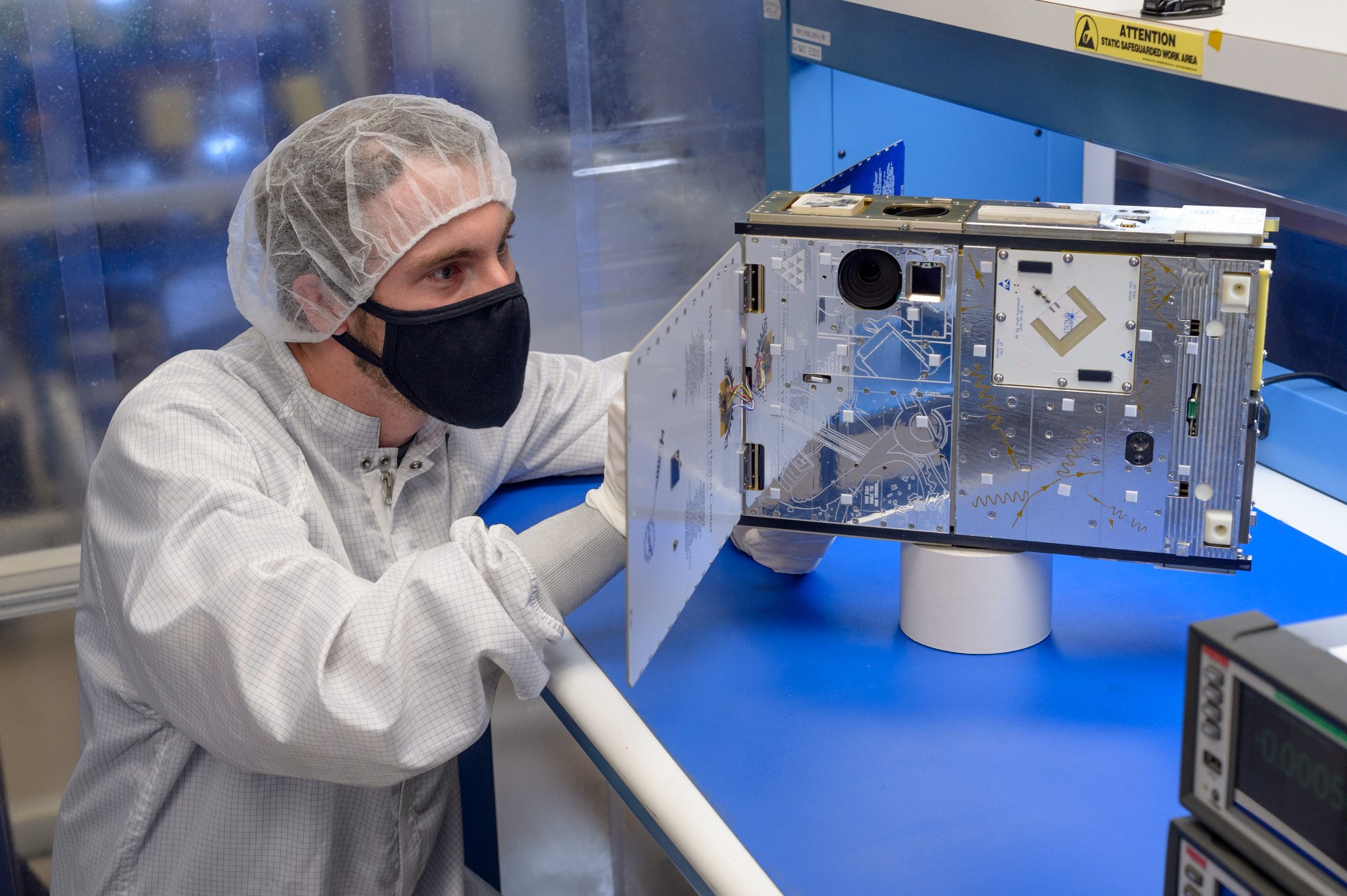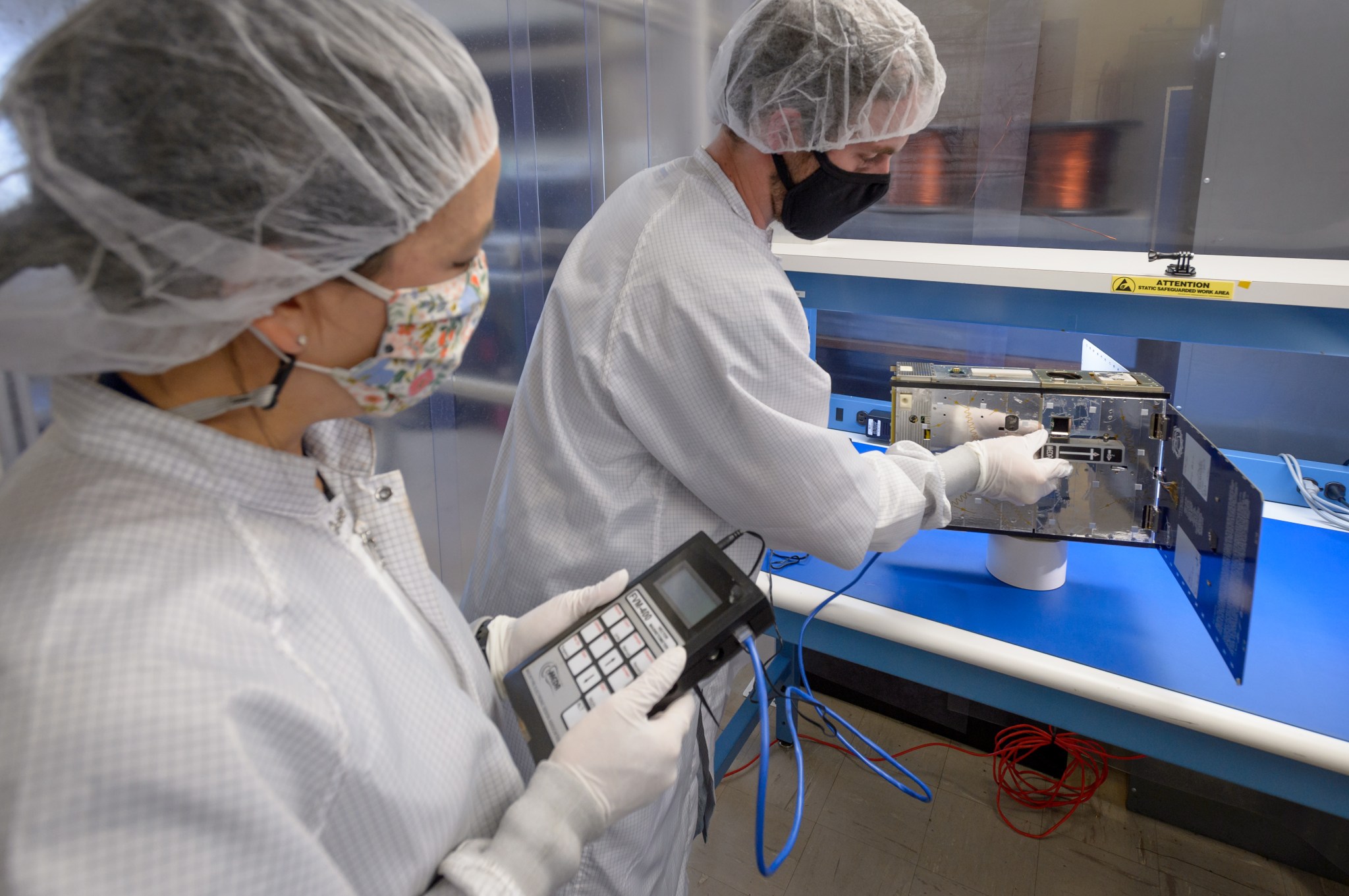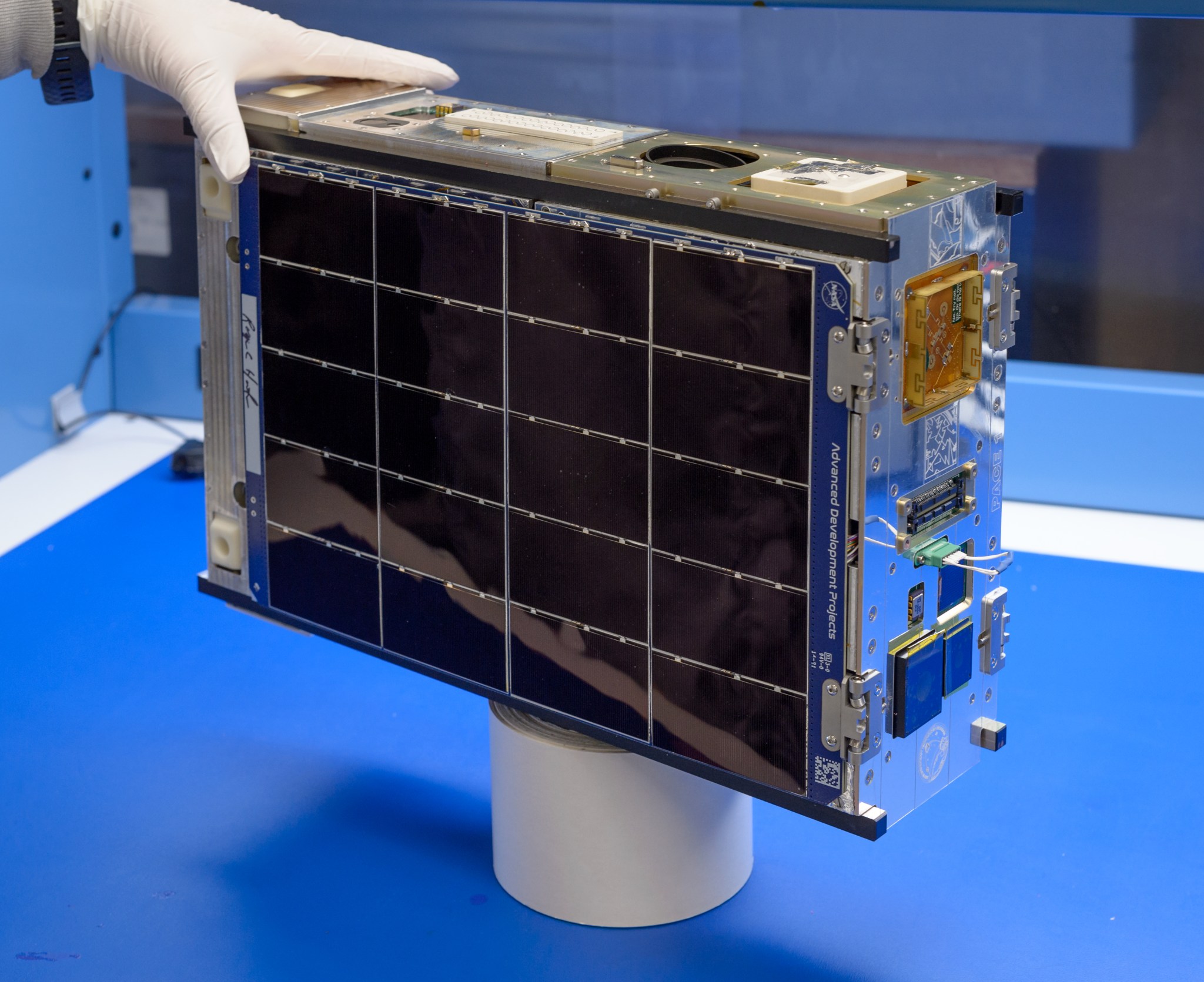NASA’s PACE initiative supports a rapid cadence of flight demonstrations, aiming to speed up advances in the state-of-the-art for new small spacecraft technologies.
New small spacecraft technologies could transform future deep space mission capabilities and bring down mission costs. NASA’s Payload Accelerator for CubeSat Endeavors, or PACE, initiative is finding ways to speed up the process of getting small spacecraft technologies ready for prime time.
NASA needs to ensure new technologies are sufficiently vetted to stand up to the extreme demands of the space environment before implementing them for an exploration mission. This vetting process, called technology maturation, is accomplished through repeated design, assembly, and testing cycles. Flight tests are key to this process, which culminates with a technology demonstration in space.
PACE’s goal is to mature technology payloads, from early-stage proof-of-concept models to flight qualification for an operational space mission, all while shortening technology testing timelines.
Fly Often
The PACE initiative supports flight demonstrations, facilitating suborbital and orbital launches for technology payloads.The initiative reduces the cost, risk, complexity, and/or time required to mature technology, lowering the barriers to development. Getting more technology payloads tested in flight more frequently helps researchers iterate their designs faster.
PACE uses a flexible approach to accommodate a wide range of projects to fly as many new technologies as possible, particularly early-stage, higher-risk innovations. A variety of flight platforms – independent, commercial, or NASA’s Advanced Development Projects, or ADP, avionics system platform – can host payloads on PACE flights.
Early Flights
The first orbital technology demonstration facilitated by PACE, called V-R3x, flew an independent free-flying nanosatellite platform comprised of a trio of one-unit CubeSats, each about the size of a coffee mug. PACE’s second orbital flight will host payloads on NASA’s ADP avionics system platform.
ADP’s platform is a modular, low-cost avionics architecture paired with commercial off-the-shelf CubeSat components. PACE’s second orbital flight mission, PACE-1, will perform a set of experiments to demonstrate the ADP technology, kicking off a series of flights to follow. The PACE team will develop, test, and operate the projects, each utilizing the ADP platform. Payloads for PACE missions come from within NASA or other US Government agencies, small businesses and other industry, academic institutions, and research laboratories. In addition to demonstrating the ADP architecture, PACE-1 also supports four technology payloads.
ADP’s avionics core is currently built into a six-unit CubeSat form but can adapt to other form factors. The core provides the supporting systems to operate the spacecraft and the payloads it carries. The satellite is roughly the size of two large loaves of bread, stacked side-by-side. The avionics core occupies a third of the spacecraft’s interior, leaving plenty of room to integrate various payloads.
ADP first flight will demonstrate a switching capability that allows multiple GPS and radio communications systems to “take turns” receiving signals. These systems use a single antenna attached to the spacecraft rather than using multiple dedicated antennas, as it’s typically done. For the PACE-1 spacecraft, this means that the amount of surface space needed for antennas is cut in half, freeing up space for surface-mounted payloads such as an attached radio frequency tag and optical experiments hardware.
Components of ADP’s supporting avionics can be configured for use in earlier-stage tests, such as benchtop lab tests or suborbital flights. This flexible approach simplifies the logistics of testing payloads in different test environments, helping researchers speed their technologies through the maturation process.
Future Flights
NASA plans to launch a series of PACE ADP orbital missions every six to nine months. The first three PACE ADP flights will launch to low-Earth orbit. Later flights aim to demonstrate technologies in deeper space, with the fourth flight targeting a Geostationary Transfer Orbit (GTO).
GTO is a highly elliptical type of orbit that passes through the Van Allen Belts – a high radiation region of space that encircles Earth – and is certain to dose spacecraft with serious amounts of radiation. PACE plans to fly spacecraft in GTO to test the resilience of ADP spacecraft subsystems and various payload technologies in worst-case high radiation environments. Technology demonstrations in GTO will help us to better prepare for deep space exploration to destinations such as the Moon or Mars, where we are sure to encounter higher radiation than low-Earth orbit.
Milestones:
- Jan. 24, 2021: PACE’s first project, V-R3x, launched a swarm of three CubeSats to low-Earth orbit aboard SpaceX’s Transporter-1 mission to demonstrate new technologies and techniques for radio networking and navigation.
- Mar. 12, 2021: The V-R3x suborbital mission flew a CubeSat on a high-altitude balloon launched by Raven Aerostar to test communication between the satellite at the upper edges of the atmosphere and four units deployed on the ground.
- No earlier than Jun. 29, 2021: The PACE-1 mission will launch to low-Earth orbit aboard SpaceX’s Transporter-2 mission. This will demonstrate the ADP technology. ADP experiments will test communications and navigation functions. The mission carries four payloads: Intrepid, a low-cost, lightweight gamma and neutron particle detector and spectrometer; ADP Optical Retroreflectors, an assembly of optical reflectors to assist in laser tracking; Stellar Exploration RFID Tag, an active modulating radio frequency reflector that improves the ability of space object tracking radars to detect and track small satellites; and the Naval Information Warfare Center Nanosatellite Tracking Experiment, a passive radar retro-reflector that improves the ability of space object tracking radars to detect and track small satellites.
PACE Collaborators:
- PACE is managed by NASA’s Ames Research Center in California’s Silicon Valley and is funded by the Small Spacecraft Technology program within NASA’s Space Technology Mission Directorate.
- Suborbital flights for PACE missions are supported by NASA’s Flight Opportunities program, based at NASA’s Armstrong Flight Research Center in Edwards, California and funded by STMD.
- Orbital flights for PACE missions are supported by NASA’s CubeSat Launch Initiative, managed by the Launch Services Program at NASA’s Kennedy Space Center in Florida, and funded by the Advanced Exploration Systems division within NASA’s Human Exploration and Operations Mission Directorate.
- V-R3x is a collaboration between PACE and the Robotic Exploration Lab, or REx Lab. The REx Lab was previously at Stanford University in California and is now based at the Robotics Institute at Carnegie Mellon University in Pittsburgh, Pennsylvania, led by Zac Manchester. V-R3x is based on PyCubed, an open-source small-satellite framework that integrates hardware and software solutions for CubeSat and PocketQube applications, and is developed by Max Holliday at Stanford University.
- The ADP platform is developed by the PACE team at Ames; Dayne Kemp is the principal investigator.
- PACE-1 payloads:
- The Intrepid payload is developed by Ames; Dayne Kemp is the principal investigator.
- The ADP Optical Retroreflectors payload is developed using commercially purchased optical retroreflectors by Ames: Jan Stupl is the principal investigator.
- Stellar Exploration RFID Tag payload is developed by Stellar Exploration Inc. in San Luis Obispo, California; David Troy is the principal investigator.
- Naval Information Warfare Center Nanosatellite Tracking Experiment payload is developed by the Naval Information Warfare Center in San Diego, California.; Shawn Kocis is the principal investigator.
Learn more:
- NASA article: What is V-R3x?
- NASA article: Picking up the PACE: Accelerating Development of Deep Space Technologies
For researchers:
- V-R3x – CubeSat cross-link, ranging, and coordinated measurement technology demonstration for future distributed CubeSat swarm missions, a suborbital flight payload in the Flight Opportunities program’s portfolio.
- Advanced Developments Projects Flight Avionics, a suborbital flight payload in the Flight Opportunities program’s portfolio.
- Intrepid Particle Detector, a suborbital flight payload in the Flight Opportunities program’s portfolio.
For news media:
- Members of the news media interested in covering this topic should reach out to the NASA Ames newsroom.































